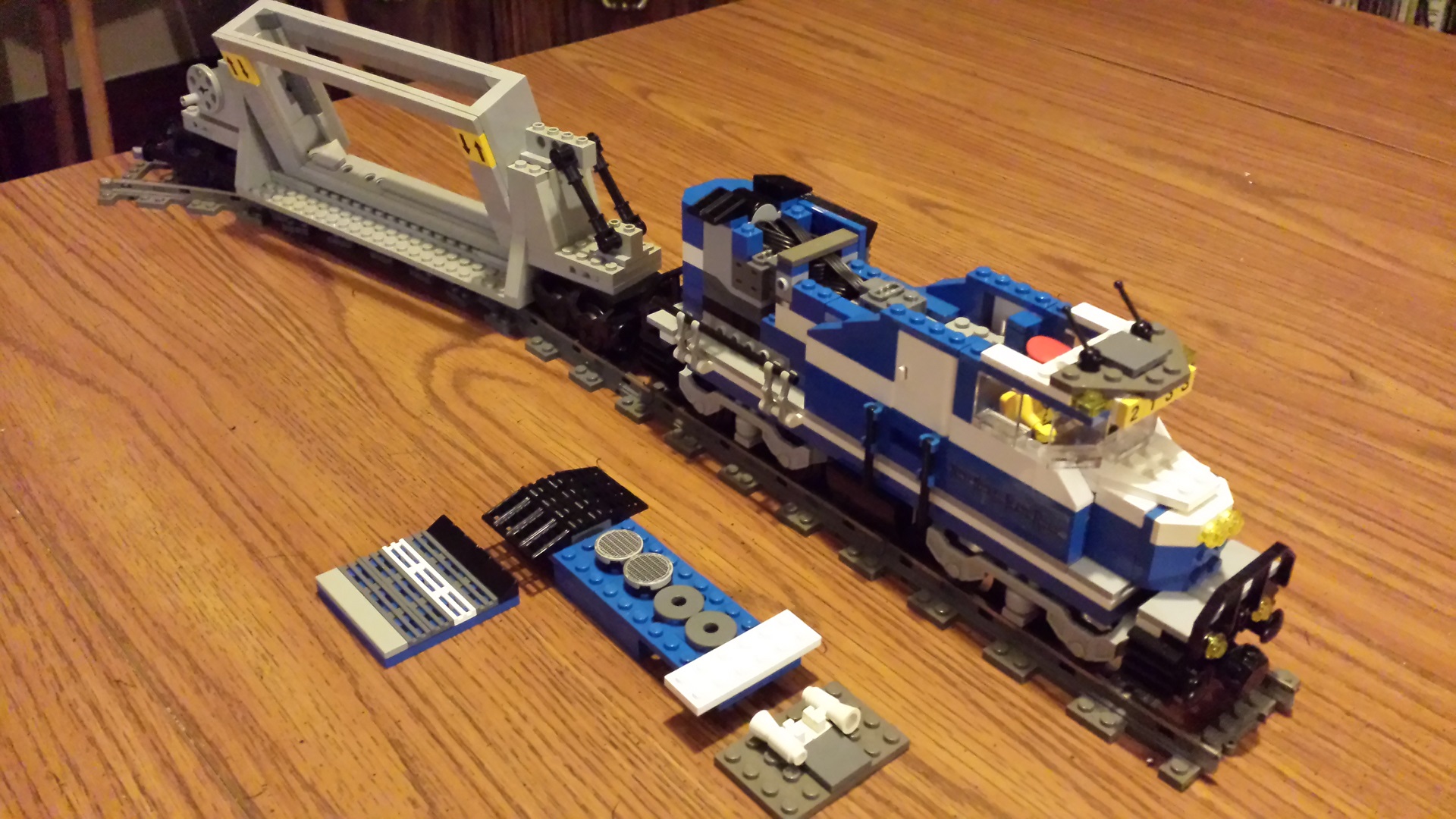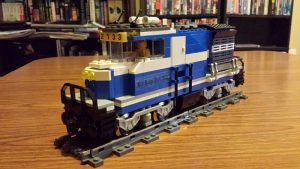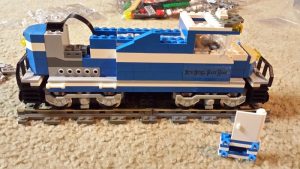
Update 3/23/17:
2133 has successfully completed a few trial runs, though more are needed to understand how it will perform with a full consist and over different grades. So far, it’s only been tested on a flat grade under minimal load. The IR regulator, while slightly recessed, still seems nicely responsive to the remote control, though the hybrid electrical system itself had a critical defect that had to be fixed before the locomotive would even move at all. When power was applied from either source, the motors wanted to go in opposite directions! The PF and 9V systems, while compatible, are apparently wired differently, which had to be corrected. I had to add a short length of 9V wire to the 9V motor so that a polarity-reversing electrical connection could be made inside the chassis. Once that was done, locomotive 2133 passed its initial tests with stellar performance. There may still be some minor, purely aesthetic revisions to be made, but otherwise, this build is complete.
Update 2/16/17:

The hybrid conversion on locomotive 2133 is complete and ready to perform trial runs. The build was delayed a couple weeks while parts arrived. The PF motor was back-ordered from LEGO and didn’t arrive until last week. I also ordered some parts through Bricklink, which arrived Monday. For those that don’t know, Bricklink is an alternative LEGO marketplace that can best be described as an online bizarre. Buyers connect with sellers from around the world or down the street selling individual pieces, complete sets, MOCs, and other things not available directly from the LEGO Shop. Many thanks to Nick’s Brix on Bricklink for providing the finishing touches on this build!
Nick’s Brix store on Bricklink
Original 1/30/17:
Hello again fellow minifigs! I’ve been working on a new build the past few days. If you have a LEGO railroad like I do, then perhaps you too have considered this: I want to build a hybrid locomotive, capable of running on any LEGO rails. LEGO discontinued the 9V system in 2008 and replaced it with the Power Functions system in use today; the major difference being that PF uses battery packs instead of electrified rails. This causes problems when trying to run a train of one type on the rails of the other type. PF motors have no way of drawing power from 9V rails and 9V motors need an alternate power source when on PF rails. Fortunately, the 9V and PF systems can be linked with official LEGO parts to create a hybrid electrical system.

Locomotive 2133 is MOC and was built in 2011 for my 9V LEGO railroad, the New Nickel Plate Railroad. It used two motors for extra power, but was still a simple locomotive. That problem was highlighted at Brickworld Fort Wayne 2016 when, as part of FortLUG’s layout, a PF segment was included to facilitate running two trains on different parts of the layout. The PF and 9V segments were connected by a crossover to allow the PF trains to traverse the entire layout, but no such reverse capability existed for the 9V trains.
I’d been thinking for a while about the practicality of a hybrid locomotive, so after receiving a PF train motor kit for Christmas, I started experimenting with the idea. In theory it’s pretty simple: the PF motor needs to draw power from the 9V rails and the 9V motor needs to draw power from the PF battery. In reality, however, it’s a more complicated undertaking. I’ve encountered a few issues already and am trying to work around them.
The PF system is more complex than the 9V system it replaced. The wires for the PF system need to be run to the motors with the excess bundled inside, so space is at a premium. The wire connection on the 9V motor slightly impedes its pivot radius and restricts space on the underside, whereas wiring was nonexistent when it was a simple 9V locomotive. The battery pack and IR regulator are large and awkwardly-shaped, making it difficult to fit them on the locomotive without being seen. All this extra equipment has made the locomotive larger and heavier, while doing little if anything to increase its tractive effort.
The question in my mind going forward is how well it will work. I’m confident the hybrid electrical system will work, but if the locomotive derails at every corner because wires are impeding the pivot of the motors, that’s a deal-breaker. If it can’t pull a train up the inclines of my layout while on battery power, that’s no good. If both electrical systems are activated at once, I see the potential for a short circuit and damage to both systems. Do any of you out there have any experience with a project like this? Let me know your thoughts or suggestions in the comments.

